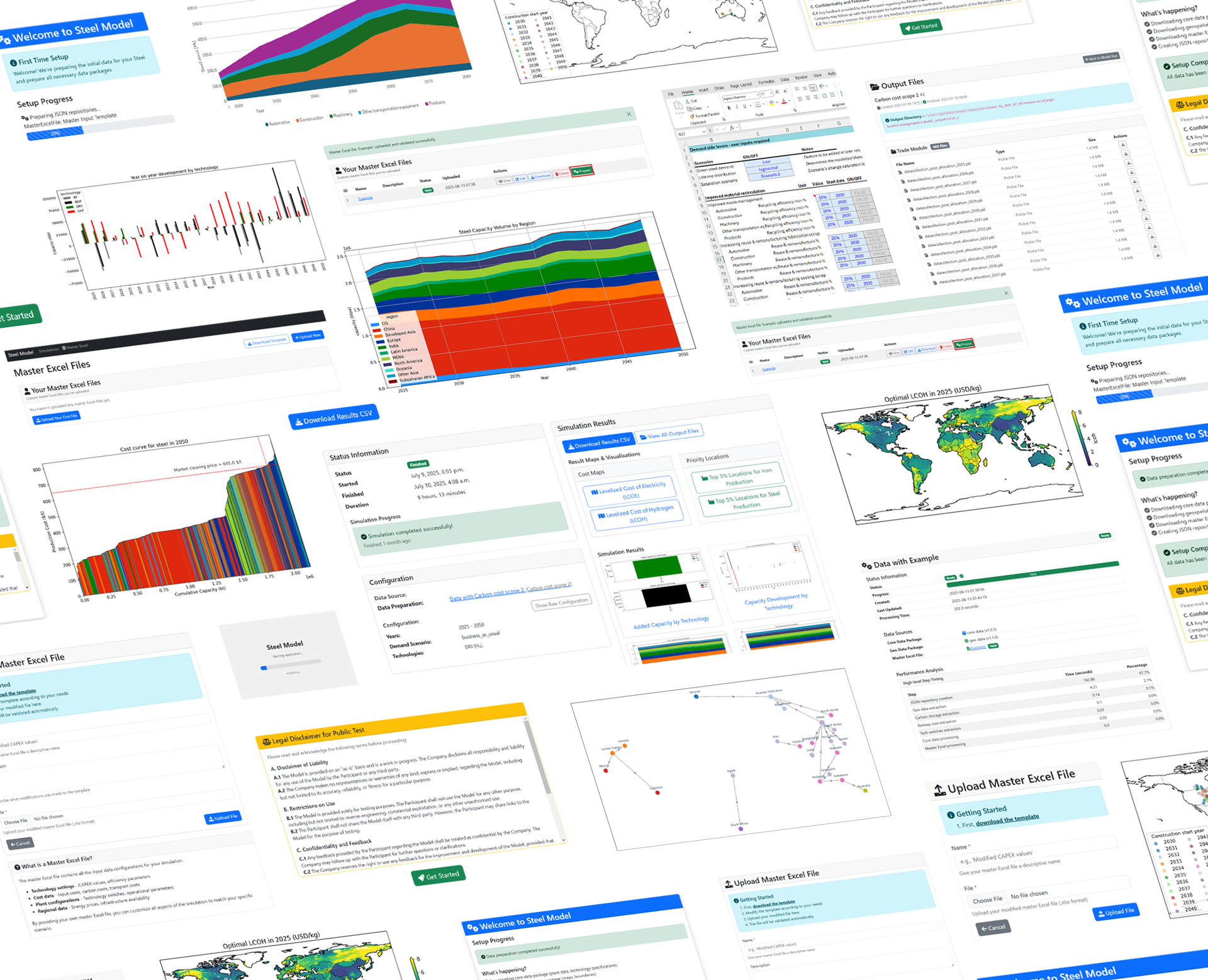
Open-Source Analytics for Steel Decarbonisation
ABOUT
State-of-the-art, open-source modelling for the decarbonisation of the iron & steel sector
Steel-IQ sets a new benchmark in open analytics for heavy industry, enabling stakeholders to design, test, and evaluate pathways to a low-carbon, competitive global steel industry. Steel-IQ was developed in collaboration with an advisory group of experts from leading iron ore producers, steelmakers, international organisations, and academic institutions. It serves as a global public good to support the design and assessment of effective steel decarbonisation strategies.
All aspects of Steel-IQ are open—users can freely access, customise, and review every input, calculation, assumption, and result. The platform ensures complete transparency, with no paywalls or hidden data barriers.
In the coming weeks, the Steel-IQ team will introduce three core scenarios. These will include a business-as-usual scenario, as well as Paris Agreement-aligned carbon cost and subsidy scenarios. This set of scenarios will provide users with robust reference pathways while supporting detailed policy and investment analysis, helping to align sector action with global climate objectives.
HOW IT WORKS
Accessible complexity
The model features graphical user interface and allows the user to provide most important inputs via an interface-coupled Excel file. The model is complex, but interacting with it is not.
Download, unpack, and open the stand-alone model
Upload your inputs and create your own scenarios
Download and visualise your custom results
CAPABILITIES
Addressing the fundamental drivers of steel decarbonisation
Steel-IQ can model scenarios that test how major factors, such as iron sources, plant locations, and global trade policies and subsidies, could shape the decarbonisation of the industry.
Iron ore grades and green steel production
Model the influence of varying ore quality on process choices, emissions, and costs in low-carbon steel pathways.
Locations of new iron and steel assets
Explore how geography, infrastructure, and emerging technologies could reshape the footprint and structure of future steelmaking.
International trade policies
Simulate how tariffs, subsidies, and cross-border trade rules alter competitiveness, investment, and the pace of decarbonisation.
Industrial policy choices
Test how different policy and investment approaches drive technology adoption and emissions reduction across the value chain.
Carbon pricing trajectories
Assess how differences in local carbon pricing affect production costs, competitiveness, and global emissions outcomes.
Domestic and regional subsidies
Investigate which subsidies drive the largest impact at the lowest burden for the government.
WHAT NEXT
Check it out for yourself
Its free, open, and easy to use
If you find the model useful – please let us know! We made it for the community with a lot of effort and we'd love to hear how it helps inform the change that needs to happen. If you have any ideas for improvements or you found a bug, please let us know via the feedback form:

